Press Release | November 7, 2024
Bosch is prepared to build the bridge from vehicle manufacturers to riders with technological innovations without compromising on security. At the 2024 EICMA, Bosch revealed some of its projects, including a TFT Connect platform that enables voice control directly via the motorcycle or via smartphone with Siri or Google Assist, a new cluster with higher contrast ratio and brightness to name a few.
Also new and upcoming from Bosch are hardware and software side six new Bosch radar-based assistance systems ensure more safety and comfort in the saddle; advances in MSC motorcycle stability control, and a new 2kW drive control unit also supports smaller electric two-wheelers.
Here are the two recent press release from Bosch…
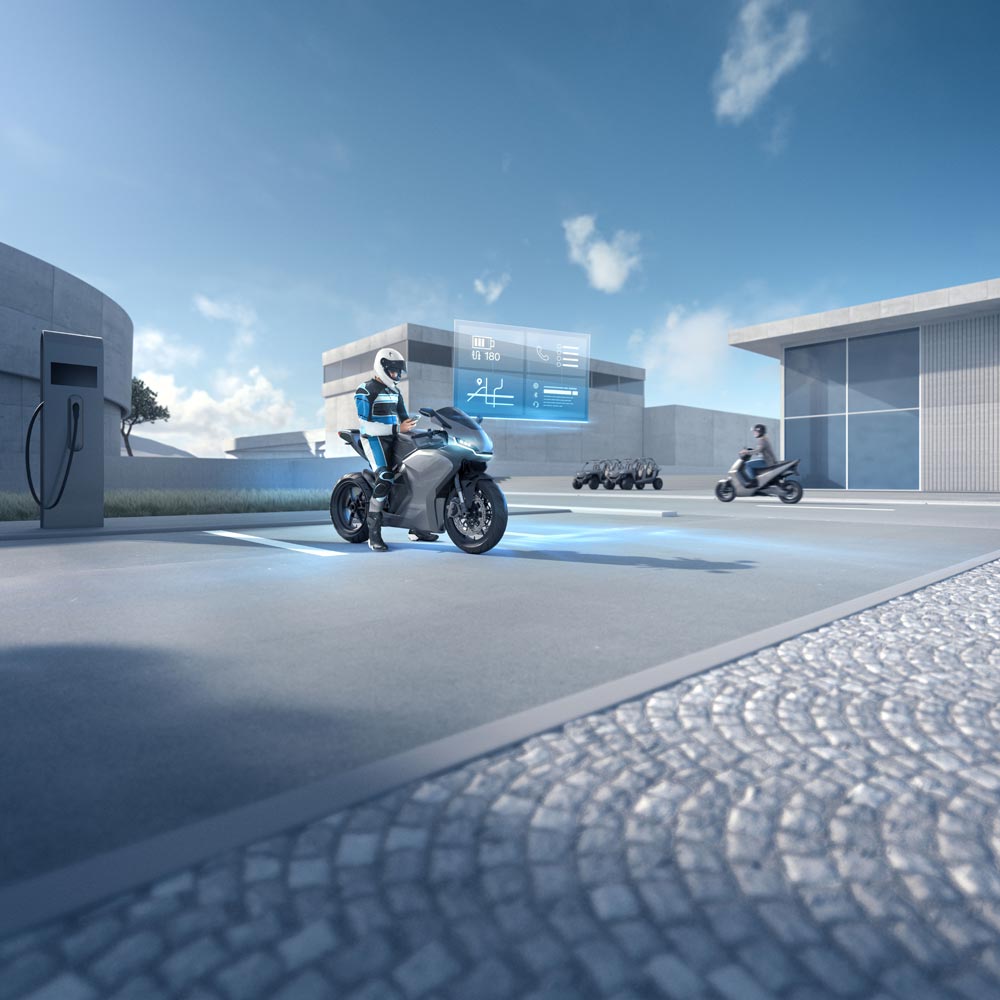
Having introduced MSC motorcycle stability control for smaller bikes in 2023, Bosch’s next step to promote the uptake of MSC in more bikes across different segments is to reveal ABSi at EICMA 2024. This new Bosch system is an ABS with integrated inertial measurement unit. Combining these two products reduces complexity. The advantages include the elimination of an external measurement unit and a reduction in necessary wire harness.
With the potential to prevent one in six accidents on German roads alone, advanced rider assistance systems (ARAS) play a major role in realizing the vision of accident-free riding. Overall, Bosch offers six new functions, including five world-firsts. Four are new functions for the front: adaptive cruise control – stop and go (ACC S&G), group ride assist (GRA), riding distance assist (RDA), and emergency brake assist (EBA). Two are for the rear: rear distance warning (RDW) and rear collision warning (RCW). Through these functions, Bosch can further enhance riding pleasure and help increase safety and convenience where needed. The front functions will be launched together with KTM in its new 1390 SUPER ADVENTURE S EVO, which will be on display at the Bosch booth.
Presenting innovations in all segments, the Bosch booth also will be showcasing race eCBS, launched with Ducati in the new Panigale V4 S 7G in July 2024. This function stands as a new milestone for the race segment of the motorcycle market. It is based on the eCBS electronic combined braking system, which is part of the Bosch ABS for premium motorcycles. The feature enables a combination of front and rear braking, even if only one of the two brakes is actively applied. In practice, this means that pulling the front brake automatically increases the pressure of the rear brake. While eCBS is currently intended for everyday use, race eCBS is for the racetrack.

Toward efficiency: Bosch counts on the latest powertrain technology
Making riding more efficient is one of the goals Bosch pursues in its ongoing development work. Significant effort is going into electrifying the two-wheeler powertrain. To adapt to the growing trend of electrified mobility, the company has introduced various solutions for different vehicle segments. Its vehicle control unit and the integrated electric drive address the goal of realizing electric mobility of 6kW and beyond. Further In-hub drive solutions and associated controller solutions dominate the smaller vehicle segments, especially in the markets of India and Southeast Asia. The new Bosch 2 kW drive control unit helps customers bring electrification to smaller segments. The drive control unit combines the inverter, engine management system, and vehicle control in one compact component. In conjunction with the wheel hub motor, the drive control unit can be used to implement comfort functions such as a smoother starting mode (Smooth Riding) or cruise control to maintain speed. Controlled by the electric motor, the electric traction control prevents the rear wheel from slipping when starting off and increases riding safety. One-throttle ride, meanwhile, is an additional function that increases powertrain efficiency by allowing the motorcycle to recuperate braking energy when the rider rolls off on the throttle. This helps extend the battery-electric range by up to 8 percent. With high vibration profiles and ingress protection levels up to IP67, the 2kW unit can handle any weather and road conditions.
At the same time, Bosch is continuing to work on making current combustion technology even more efficient. Here, Bosch is providing specific engine management systems and components for two-wheelers and powersports vehicles to help manufacturers meet future emissions regulations, such as Euro 5 and India’s BS 6 (Bharat Stage 6), including full Onboard Diagnostics II (OBD), Step 1 and 2. Together with the latest sensor technology, the engine management systems can achieve considerable efficiency gains compared with the conventional carburetor still in widespread use in emerging markets. Bosch engine components, such as injectors or sensors and controllers, are also already capable of supporting gasoline blend ratios up to E100 and CNG/LPG, even in the two-wheeler sector. Additional functions such as various driving modes or quickshift solutions can also be implemented quickly and easily via the engine control unit, even in smaller vehicle classes.
Digital: Functions on demand and updates over the air
Increasingly standard in cars, updates over the air and functions on demand are also gaining ground in two-wheelers. Here, Bosch continues to build on its core competencies: developing solutions that combine technological progress and riding enjoyment. Bosch software solutions mean that motorcyclists can install new functions even after purchasing their vehicle. Special or advanced riding modes for the racetrack or off-highway use, as well as convenience functions for the next long trip, can thus be added on demand. This is done easily via the rider’s own smartphone: the new functions or updates are downloaded from the vehicle manufacturer’s app and then applied to the motorcycle.
To create a smooth integration of connected features and user experience, it is vital that the human-machine interface be well set up and easy to understand. Bosch’s longstanding experience in cluster development is evident here: our existing TFT display generations, ranging from our 5” connected cluster up to our 10.25” integrated connectivity cluster, have impressive readability even in direct sunlight thanks to our optical bonding process, which is applied across the full range of our display products.
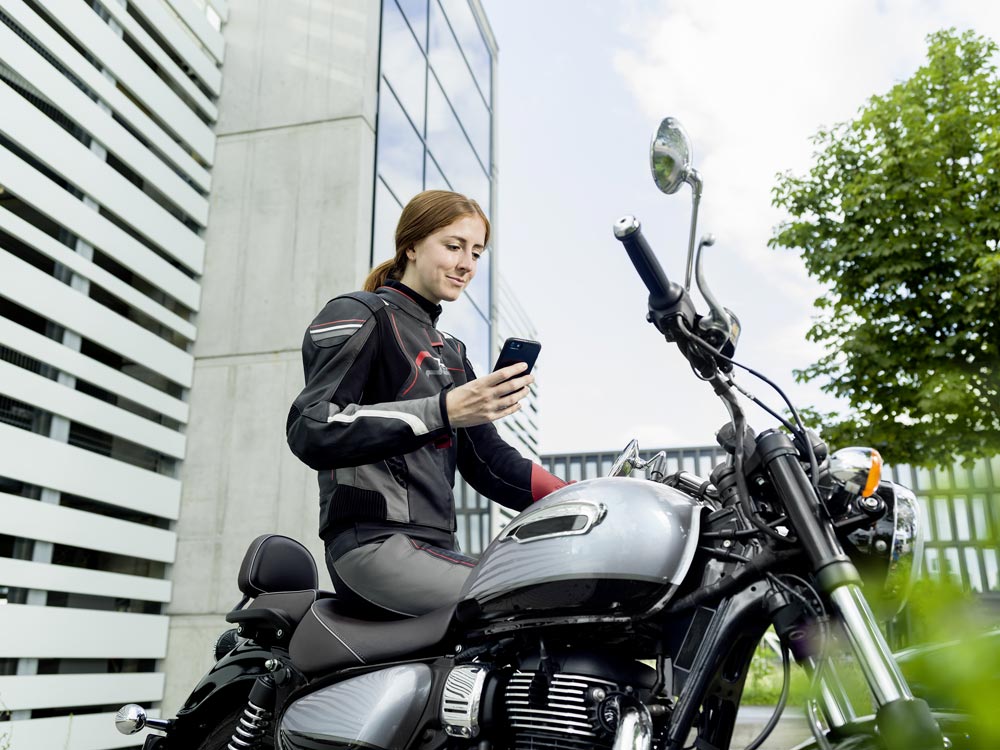
Milan, Italy (November 5, 2024) – Providing user-friendly accessibility, staying securely connected, and yielding the benefits of digital content—these are all clear trends in the motorcycle segment. With its new connected clusters, Bosch offers the key to a better riding experience: a display that is easy to operate wearing gloves, clearly visible no matter the weather conditions, and operable via voice command, allowing the driver to keep their hands on the handlebars.
“In a connected environment, Bosch is prepared to build the bridge from vehicle manufacturers to riders with technological innovations without compromising on security. With its two-wheeler and powersports organization, Bosch is constantly working on innovations and continues to invest in dedicated motorcycle and powersports technologies,” says Geoff Liersch, head of Two-Wheeler & Powersports at Bosch, in the context of the EICMA 2024 motorcycle show in Milan.
Bosch offers a seamless connected experience and integration
Already standard in cars, the use of functions such as wireless Apple CarPlay on a motorcycle display is not yet an everyday activity for riders. The Bosch TFT connect platform can link to a smartphone, so that the driver can safely store the phone away and still access apps on the display while riding. Additionally, the connection of a global navigation satellite system with the platform provides accurate location information. Because the system will support Linux and Android Automotive, manufacturers have more flexibility to adapt and integrate content, and so can offer riders more variety in the interface design and additional content. Another key function of the TFT Connect platform is its voice control option, which enhances safety and convenience for riders on the road. With this feature, riders can manage motorcycle settings like the ride mode just with voice commands. Other features can be managed via smartphone, using Siri or Google Assist: users can answer calls, dictate messages, operate the navigation system, or simply pick out a song completely hands-free.
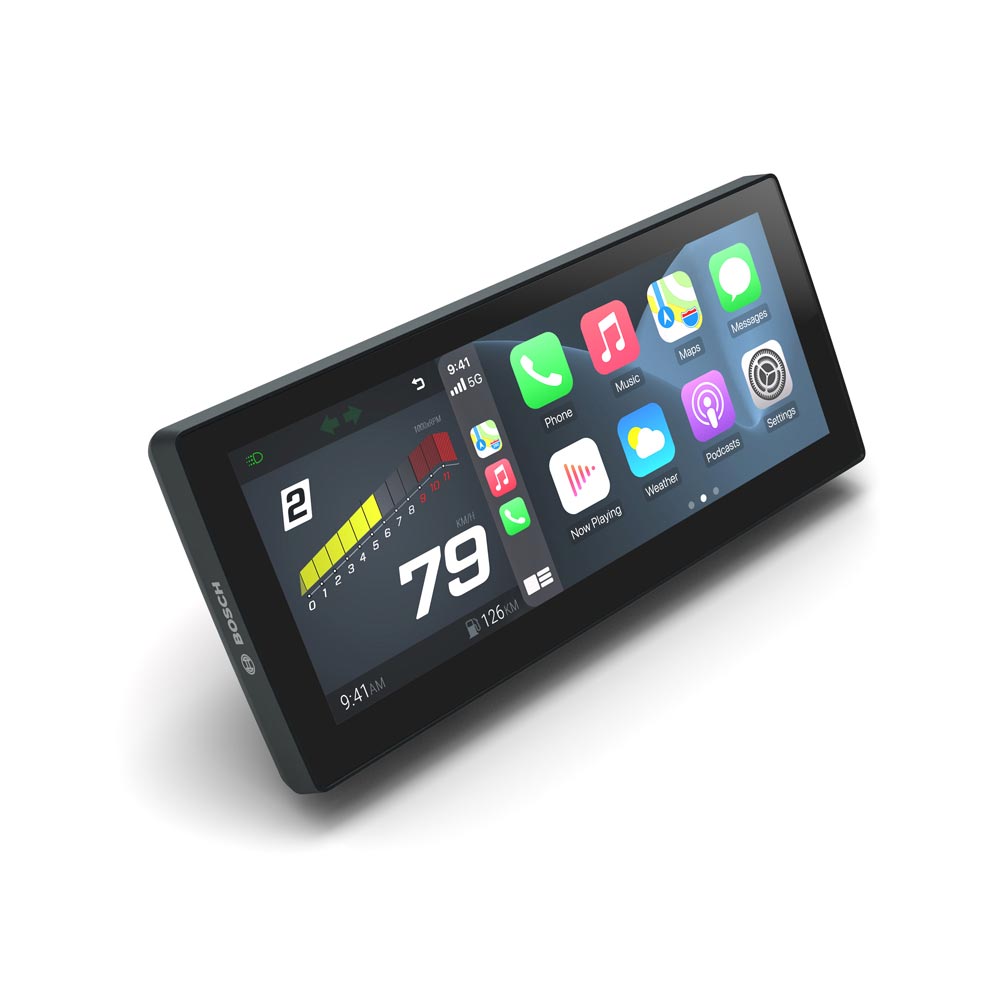
More clarity and control with the new connected clusters from Bosch
The display on a motorcycle is more than the connection between bike and rider: it must be able to show relevant information for the ride at a glance, but also has to offer several features and options. And no matter if the sun is shining brightly or if the rain is pouring down, the information on the display must be clearly visible. The new Bosch display generation TFT connect offers high-resolution displays, advanced connectivity features, and a customizable interface. It sets a new standard for motorcycle instrumentation and boasts the highest contrast ratio and brightness on the market. With more than 16 million colors, brightness of up to 1,500 nits, and a contrast ratio of 1250:1, it allows crystal-clear and vibrant images in any weather. The display will be available in the sizes 7” and 10.25” at launch, but can also be adapted to different layouts and sizes. Also, the newly introduced touch interface is seamlessly integrated with the user interface and is designed to work with or without gloves in different weather conditions to provide riders with a personalized and comfortable user experience. Furthermore, the platform’s improved bootup times and system concept for displaying relevant information in less than a second ensure that riders can get on their bikes and set off immediately.
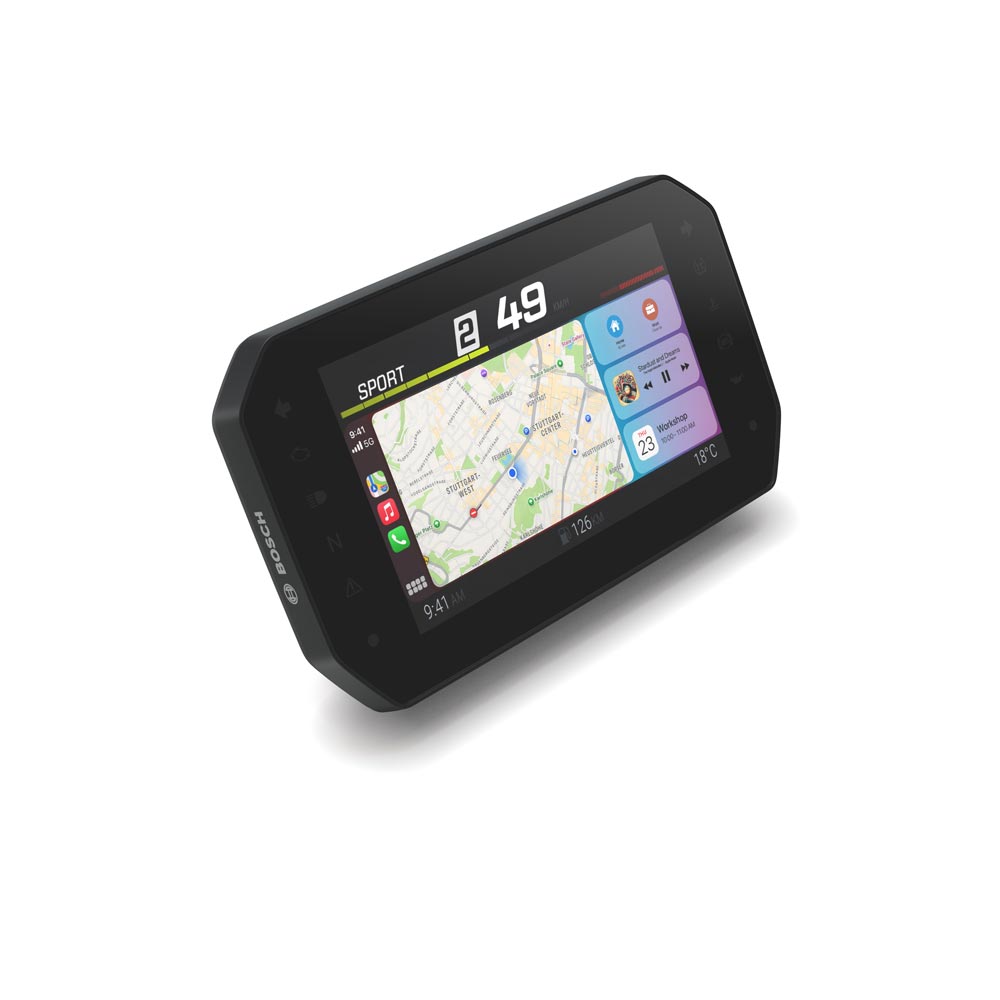
The Bosch TFT connect platform represents a step forward in motorcycle instrumentation, offering riders clarity, connectivity, and customization. With its advanced features and user-friendly design, the platform is set to enhance the riding experience for motorcycle enthusiasts around the world.
Handling the complexity of the future with the new Bosch central gateway
In an increasingly connected world, security is fundamental to avoiding unauthorized access to and tampering with vehicle components. Bosch’s central gateway for two-wheelers brings state-of-the-art security to the motorcycle and powersports world, safeguarding the other electronic control units in the vehicle’s trusted zone, ensuring rider safety, and helping to comply with upcoming cybersecurity regulations.
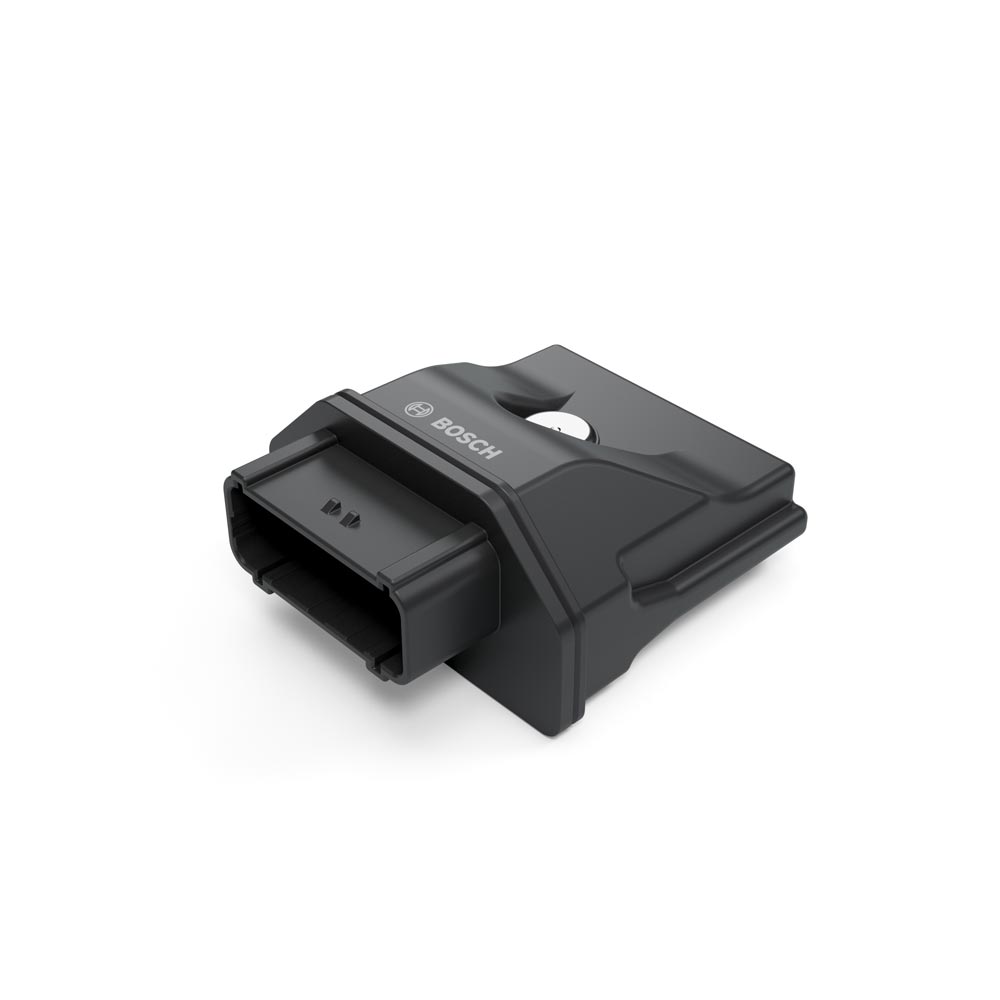
Bosch’s gateway platform is prepared to serve a large variety of vehicles in a range of sizes. Also, it’s designed to be constantly active and includes additional vehicle inputs and outputs; this makes it possible to deliver further features, turning it into a true gatekeeper for the entire vehicle. Functions such as over-the-air updates, remote function activation, connected safety functions, and vehicle tracking can be hosted on the gateway. Furthermore, the gateway can enable secure smartphone-based keyless systems, in which the rider can unlock the vehicle with their smartphone hands-free. This will open up new ways to make the riding experience more personalized and to improve riders’ daily life. With its versatility and functions, Bosch’s gateway for two-wheelers serves as a basis for future architecture upgrades.
“The technology Bosch delivers for greater security in connectivity and data exchange is laying the basis for new services and connected assistance and comfort functions. This brings us closer to our goal of shaping the future of riding,” Liersch says. “It’s exciting to be part of an ever-evolving industry, and Bosch is consistently driving forward the development of new motorcycle technologies in both software and hardware to ride at the very forefront.”
Additional information is available online at www.bosch-mobility.com or www.bosch.com.